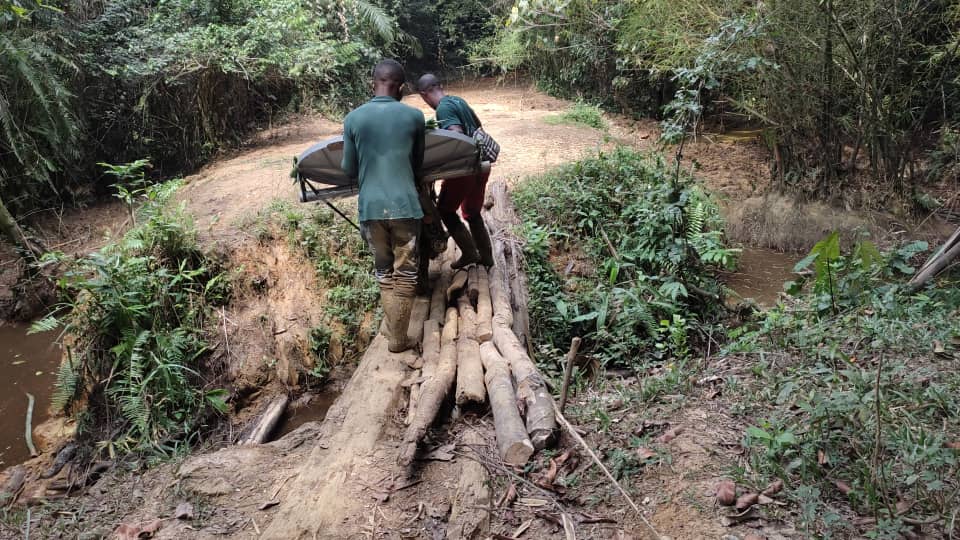New Land Mobile Technology Driving the Need for Modern SATCOM Capabilities

Industrial revolutions leave no sector or industry untouched, and the fourth industrial revolution is no different. We are witnessing the rapid transformation that’s blurring the line between the physical and digital worlds through artificial intelligence, machine to machine communications, and the Internet of Things—technologies that are touching every aspect of our lives. For the government and defense industry, there is an opportunity to be part of this transformation in a way that will improve operational effectiveness and safety, but speed is key.
In a groundbreaking example of such transformation, last fall the U.S. Army successfully tested a driverless tractor-trailer. The tractor-trailer was one of four vehicles in a convoy that traveled over the bridge linking Port Huron, Michigan, and Point Edward, Ontario, Adoption of driverless convoys, as well as other manned and unmanned teaming operations in the air and on the ground, will transform not only the supply chain but the entire way that the U.S. Army will conduct operations.
Current high-performance satellites like Intelsat EpicNG are already providing this type of connectivity for land mobile communications-on-the-pause and communications-on-the-move for tactical satcom in the field. These new higher-powered satellites enable much smaller dishes than previously required and are ideal for the government’s mobility applications.
“The underlying goal that’s driving the military’s driverless vehicle program is safety. On the battlefield, a supply convoy is a prime target for attack. The Army believes autonomous technology could put fewer soldiers in those trucks, riding instead in better armored vehicles,” writes Kevin Lavery for WKAR in his coverage of the test.
Today, cyber and network operations are equally as important as physical operations, with satellite communications essential to how soldiers and systems will connect to the network. SATCOM currently supports ground, air and maritime operations. This will only grow to support the broadband requirements of semi- and fully-autonomous ground and air systems in the future, as well as future rotary platforms that will fly further, faster, and higher and will outstrip radio line-of-sight systems.
However, a paradigm shift is required to harness these technological innovations. Traditionally, the military has used a procurement process that is so lengthy technology often becomes outdated before it is launched. “That’s why we end up with programs that last for 30 years,” said Major General David Bassett, Director PEO C3T, the acquisition arm for the Army network team. “By the time you’re done, you’re fielding yesterday’s technology tomorrow and that’s not something anybody is interested in.”
This is not a new problem, for as French historian Mark Bloch observed in 1940, “Our leaders, or those who acted for them, were incapable of thinking in terms of a new war…The ruling idea of the Germans in the conduct of war was speed…Our own rate of progress was too slow and our minds too inelastic for us ever to admit the possibility that the enemy might move with the speed which he actually achieved.”
Like the hardware and weapons that it buys, the military needs to change the way it procures satellite communications so that it can leverage what industry is building in a timely manner. Military officials are aware of this problem and are making efforts to change the SATCOM procurement model. The Defense Advanced Research Projects Agency (DARPA), for example, is attempting to leverage commercial investment in Low Earth Orbit (LEO) constellations through a program called Blackjack. In the meantime, the Wideband Communications Services Analysis of Alternatives is investigating how the DoD can reduce procurement time to take advantage of next generation commercial capabilities.
Additionally, commercial industry is responding to the Government’s unique global requirements by offering “services” models in addition to leasing bulk bandwidth. Our military requires global responsiveness to deploy anywhere in the world with little notice. Leasing bandwidth all over the world is unaffordable. Alternatively, a services model in which the military only pays for what they use or offers a monthly subscription provides this global responsiveness in an affordable way. Intelsat General’s family of Flex Managed Services will provide this option in the air, ground and sea.
The U.S. has long been the undisputed leader in space and military technology, but it must be vigilant not to fall into the trap of complacency. The M1 Abrams Main Battle Tank, M2 Bradley Fighting Vehicles, and AH-64 Apache Attack Helicopter were developed in the 1970s but remain at the core of our combat power – 48 years later. The US military is long overdue for a refresh and it must include these technical advancements.
Our country’s continued technological superiority depends on closer, more coordinated partnership between industry and the DoD. As Major General Peter Gallagher, Army’s Director of the Network Cross-Function Team said: “What are we pivoting to? We’re going to figure that out. We’re going to experiment, we’re going to demonstrate, we’re going to adapt and buy solutions that are already proven…But we also need industry’s help in defining what’s in the art of the possible for us to fight and win against a peer adversary in a contested battlespace.”
Intelsat’s leadership in space with connected car, aero and maritime has provided a wealth of experience that gives us the ability to deliver the innovative, affordable and timely solutions that our military needs. Intelsat is ready.






















